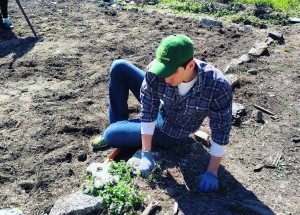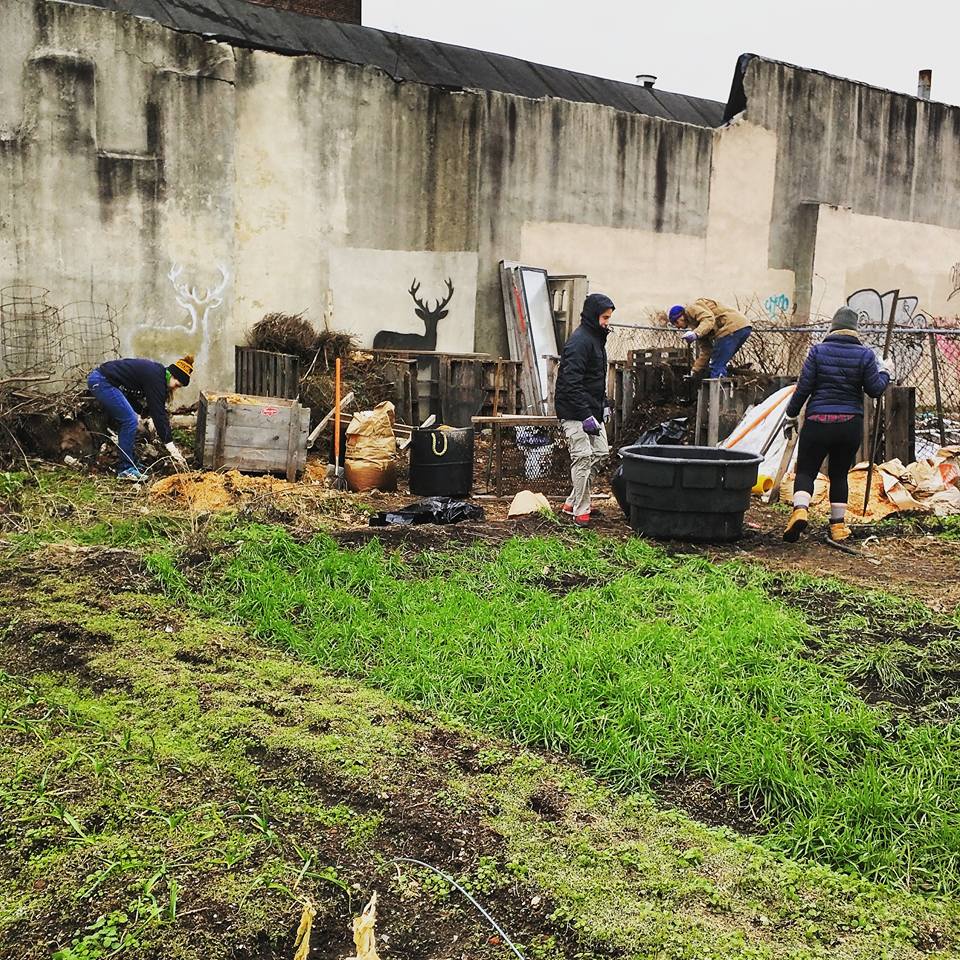‘If you start to address the affordable housing issue, you will begin to address the poverty issue’
 March 5, 2021
Category: Featured, Long, Purpose
March 5, 2021
Category: Featured, Long, Purpose
Updates
Updated to correct a typo in the 24th paragraph.(3/5/2021 at 12:30 p.m.)Nora Lichtash explained that Philadelphia separates families by shepherding children into the foster care system — because of a lack of safe, affordable housing — at the cost of $42,000 per year to city taxpayers.
People with disabilities sit in publicly funded nursing homes that cost as much as accessible private residences for the same reason.
For people of color, women, and families with children in Philadelphia’s lower-income communities, the housing crisis continues to worsen under the weight of the pandemic.
According to Lichtash, who heads up the Women’s Community Revitalization Project, Philadelphia’s premier community development organization led by women, housing costs in the city leave families without enough money to pay for necessities such as food, transportation, clothing, and utilities.
In contrast, the City — or, instead, taxpayers, as Lichtash stressed — owns 6,000 parcels of land, many of which include vacant buildings, with at least 5,000 considered surpluses. Over the past seven years, officials handed out or put to use less than 700 of those parcels.
“I’m 70, so I won’t be alive in 35 years when they are finally meeting the end of the City’s owned property,” said Lichtash, who told Generocity that she believes it benefits everyone to address these issues. “That feels like a mistake when so many people need food and housing.”
"(Our goal is) to ensure that land will stay permanently affordable through mechanisms like community land trusts."
Lichtash is part of a growing coalition of community organizations that wants the City to shift its disposition policies regarding publicly owned land. “[Our goal is] to ensure that first priority goes to organizations that have the capacity to address these crises and to ensure that land will stay permanently affordable through mechanisms like community land trusts, and that there’s some community control,” she said.
Earlier this year, the WCRP, along with 60 other organizations under the banner of The Philadelphia Coalition for Affordable Communities, produced a report highlighting the region’s housing affordability and food insecurity problems, focusing on Philadelphia’s culpability in giving preference to wealthy developers when disposing of vacant land.
The coalition timed the report, along with their Land Justice Campaign, to coincide with the start of City Council’s 2021 legislative session, hoping to bring more awareness to the issue and push council members into allowing neighborhoods use of vacant land for community gardens. Several council members, including Jamie Gauthier, who represents District 3 in parts of West and Southwest Philadelphia, expressed support for The Coalition’s efforts and, in the case of Gauthier, suggested possible legislation to address the vacant land issue.
"In the 3rd District, which I represent, almost half of all households are cost-burdened, and so we're in this together."
“In the 3rd District, which I represent, almost half of all households are cost-burdened, and so we’re in this together,” Gauthier said.
In housing parlance, cost-burdened refers to those households that spend 30% or more of their monthly income on rent or mortgage payments, the former of which includes half of all Philadelphians; the latter, one-third.
“I think that publicly-owned vacant land especially in neighborhoods of choice is among the most powerful tools that our government has to help us to achieve those affordable housing goals and to help us protect community spaces,” Gauthier added.
She told Generocity that she’s working on legislation that would give preference to community members looking to organize into community land trusts and take ownership of city-owned vacant land. Her goal is to give people a fair opportunity to compete with for-profit market forces that too often end up controlling public spaces.
“Philadelphia and cities across the country have a legacy of adopting policies that hurt Black and brown communities and I think putting in place this kind of protection would start counteracting that,” Gauthier continued. “That’s one of the reasons why I’m so passionate about it.”
The PCAC report and contemporaneous Land Justice Campaign highlight a housing affordability crisis that only continues to worsen as the COVID-19 pandemic spreads throughout the region.
As authors of the report note, just one out of every three parcels of city-owned land went toward affordable housing over the past five years, while about one out of 10 went to community gardens or public spaces. Meanwhile, in areas like North, West, and South Philadelphia over the past 20 years, rising housing costs displaced upward of 32% of Black residents.
Vacant land is about more than just creating another public square; in areas where food deserts exist, such lots host community gardens which can be the only sources of nutritious food for many neighborhoods.
As explained by both the report and Lichtash, the issue is rooted in both poor city planning and bad policy. Philadelphia has a history dating back decades of adopting economic policies that disenfranchise low-income, Black, and Latinx communities, which is why the region holds the distinction of being the nation’s poorest big city.
Despite front-page efforts to attack poverty, Philadelphia continues to pass laws that burden the poor.
Despite front-page efforts to attack poverty, Philadelphia continues to pass laws that burden the poor. One such law passed in 2019, which, despite the best of intentions, according to Lichtash, ended up as a giveaway to the city’s land barons.
“In 2019 legislation was passed to make it easier for market rate developers to get publicly owned land,” Lichtash noted. “They are able to ask for as much of it as they want ” as long as they meet the condition that at least 51% of their development qualifies as affordable housing using federal guidelines.
But, according to Lichtash, for one out of nine Philadelphia families that newly developed affordable housing will still not be affordable.
“We’re not against market-rate development, but we are for fairness and to ensure that the rest of us have some access and a level playing field,” Lichtash added.
PCAC is far from the only organization working on the housing issue in Philadelphia. In recent years a myriad of nonprofit voices has taken up the cause, including The Pew Charitable Trusts, whose recent report “The State of Housing Affordability in Philadelphia” comes to many of the same conclusions as that of the groups running the Land Justice Campaign.
Focusing on the supply-side of the equation, Pew found that around 230,000 Philadelphia households are cost-burdened — the equivalent of 530,000 people — making the city average in terms of affordability considering its high poverty rate. The report did find that the rate of cost-burdened households did fall slightly, but only because of an increase in high-income households.
But as Octavia Howell, who wrote the Pew report noted, the cost burden threshold of 30% used by economists can be arbitrary.
According to the Pew report, in 1981, the federal government began defining “cost burdened” as those households that spent 30% or more of their income on rent or mortgage payments, a threshold defined by public housing programs and mortgage lending standards. Howell noted in both the report and to Generocity that the burden can be — and is — much higher for many Philadelphians.
“It’s really just speaking to the limitations of the cost burden measure where it doesn’t take into account that you have student loans or that you have medical debt,” Howell said. She explained that there are other, more complicated ways of measuring the problem. “Sometimes people look at severe cost burden. And so that’s where you’re spending 50 percent or more of your income on housing and that’s something that we do experience in Philadelphia,” Howell said.
"Cost burden was highest among Hispanics within the city of Philadelphia and that really correlated with the experience of poverty."
However the cost burden is calculated, Pew found that the issue isn’t spread out across the city in equal measure. As with most things in Philadelphia, housing affordability is a problem separated by racial demographics and geographic status. Black and Latinx neighborhoods bear the brunt of the hardships.
“Cost burden was highest among Hispanics within the city of Philadelphia and that really correlated with the experience of poverty,” Howell said. She went on to say that the same was true for African American communities, with much of it focused in the North, West, and Southwest sections of the city. North Philadelphia, for example, saw the neighborhood increase 4 percentage points in cost burden over the past decade.
PCAC’s campaign for land justice is about more than housing affordability; it’s about the city’s growing food insecurity crisis as well.
 Over 400 active community gardens and farms located in neighborhoods where an average of one in five people live in poverty are under threat of market forces. In 2018, for example, South Kensington lost La Finquita, or “The Little Farm,” a community garden established on privately-owned vacant land in 1988 to developers.
Over 400 active community gardens and farms located in neighborhoods where an average of one in five people live in poverty are under threat of market forces. In 2018, for example, South Kensington lost La Finquita, or “The Little Farm,” a community garden established on privately-owned vacant land in 1988 to developers.
According to Suku John, the executive director of the East Park Revitalization Alliance, a group that’s also a member of the PCAC, Philadelphia has many community gardens and nonprofits working with food and health issues and urban farms. He noted that in many ways, the city is a national leader in the urban agriculture movement. And while he said that urban farming might not solve the poverty problem writ large, he’s a big proponent of the movement for several reasons.
“I think if you talk to anybody in the neighborhood that participated in any of our programs, I think they would tell you that yes, growing food, growing tomatoes, peppers, cucumbers, kale, collard greens, that kind of stuff besides being sort of satisfying emotionally, it’s also, fresh food and it does lower your grocery bills, your food expenses,” John told Generocity. He went on to say that, in addition, urban farming is also a community-building tool that brings people closer to nature.
“Most people don’t really think about where their tomatoes came from or where their apples came from,” he continued. “Community gardening can sort of help [people] reconnect to make you actually think about what it takes to grow the food that we all need.”
Community gardens can’t compete with wealthy land developers' moneyed interests, even when the law is on their side.
But community gardens can’t compete with wealthy land developers’ moneyed interests, even when the law is on their side.
As John explained, his group worked with City Council to place vacant properties into land banks, thinking that it would allow fair competition for nonprofits to purchase the parcels. The hope was that the plan would streamline the process as well, as vacant land is owned by so many separate city entities — the School District of Philadelphia, Philadelphia Housing Authority, Parks & Recreation, and more — making it impossible for community groups to navigate making a purchase. In the end, though, the city never funded the land banks.
John said the current land justice campaign is designed to pressure the city into thinking about the community.
“We’re not saying that the community should get all the land,” said John, who noted that commercial development is necessary. “But the community should have a say in it.”
“And because Philly has such a poverty issue that it does not appear the city has made any meaningful changes, we are of the opinion that if you start to address the affordable housing issue, you will begin to address the poverty issue,” he added.
Trending News








